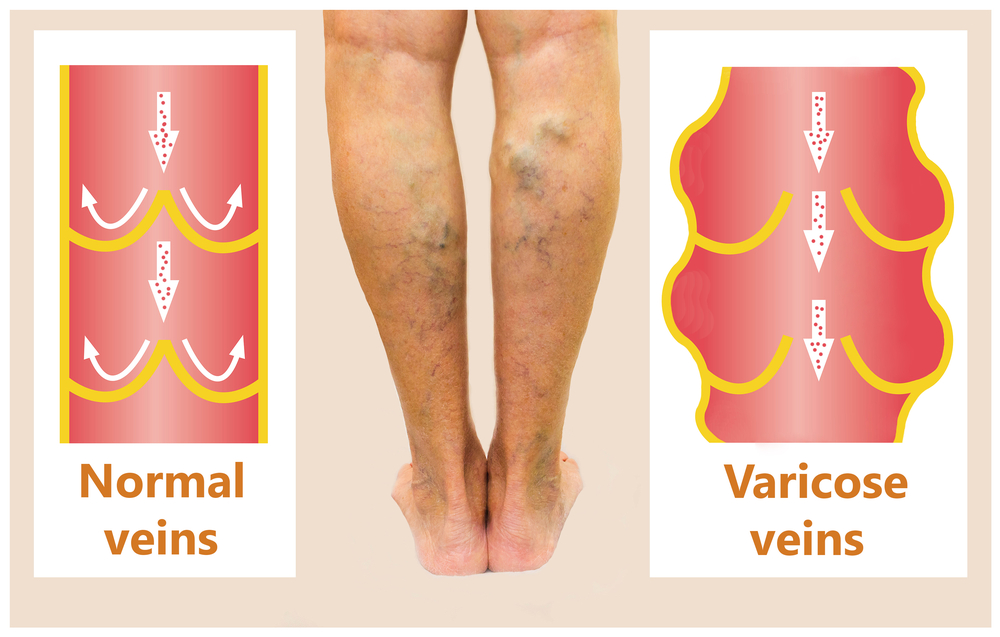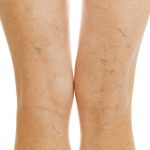Advantages of a Phlebectomy For Treating Varicose Veins
 Once they’ve developed, varicose veins will remain until they’re treated. Not only are they unsightly, but swollen veins on your legs can be painful. One of the best treatments for varicose veins is an ambulatory phlebectomy procedure.
Once they’ve developed, varicose veins will remain until they’re treated. Not only are they unsightly, but swollen veins on your legs can be painful. One of the best treatments for varicose veins is an ambulatory phlebectomy procedure.Read on to learn the advantages of this treatment and why it may be an ideal alternative to sclerotherapy to collapse protruding varicose veins.
What is Phlebectomy of Varicose Veins?
A phlebectomy procedure, also called an ambulatory phlebectomy, is a minimally invasive treatment performed under local anesthesia to remove varicose veins from the body. This advanced technology is often considered superior to traditional vein stripping, which involves invasive surgery. Minimally invasive, this procedure removes varicose veins that lie just beneath the surface of the leg.
Who’s an Ideal Candidate?
Most people diagnosed with varicose veins are suitable candidates for a phlebectomy procedure. This includes those who do not want to undergo traditional vein stripping or other vein reduction treatments, including sclerotherapy. Ideal candidates include adults of any age who have protruding varicose veins. The best way to determine which varicose vein removal method is suitable for you is to schedule a consultation appointment.
How is the Procedure Performed?
First, your physician makes a series of small incisions in the skin over the varicose vein being treated. Next, a small phlebectomy hook is eased through the small incisions to physically remove the distressed vein from the body. Once the damaged vein is removed, the body naturally redirects blood flow to healthy surrounding veins. While the procedure requires a local anesthetic, it’s considered safe for most patients and requires less recovery time than more invasive vein removal options.
What To Expect During Recovery
The recovery process for this treatment is relatively short, with most patients recovering after three to four weeks. Compression stockings are recommended to help redirect blood flow to healthy veins, reduce swelling, and encourage healing. Compression stockings will need to be worn for approximately two to three weeks following the procedure. So long as the stockings are worn, almost all activities can be resumed 24 hours after the procedure, while strenuous activities should be limited for two weeks.
Potential Risks and Side Effects
As with all surgeries, a phlebectomy involves risks and possible complications. Complications may become severe and life-threatening in some cases. In addition, complications can develop during surgery or recovery.
Potential complications of a phlebectomy are typically temporary and include:
-
Bruising
-
Change of skin color near the vein removal site
-
Inflammation of remaining fragments of vein
-
Numbness
The general risks of surgery include:
-
Anesthesia reaction, such as an allergic reaction and problems with breathing
-
Bleeding
-
Blood clots
-
Infection
Lasting Results
Results achieved from an ambulatory phlebectomy procedure should last a lifetime. The longevity of this treatment can be attributed to the fact that varicose veins are entirely removed from the body. However, the removal of one varicose vein does not preclude the development of another. If another varicose vein develops, you may require further treatment.
Insurance Coverage For Varicose Vein Treatments
Insurance coverage for an ambulatory phlebectomy procedure is determined on a case-by-case basis. In most instances, insurance companies decide whether or not to cover treatment based on medical necessity. If you have concerns regarding coverage for varicose vein treatments and procedures, we recommend discussing coverage criteria with your insurance company, as every company is slightly different. We also suggest you inquire about insurance coverage for the compression hose required after the procedure.
Vein & Laser Institute offers several FDA-approved varicose vein treatments, and for many of them, no anesthesia is needed. Contact us today to schedule a consultation to learn more about which treatment is best for removing your varicose veins.
Recent Posts



